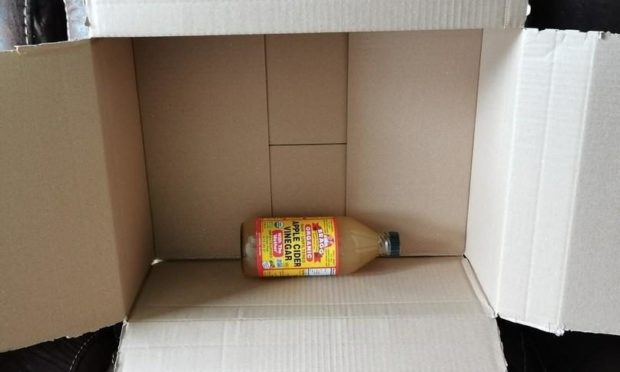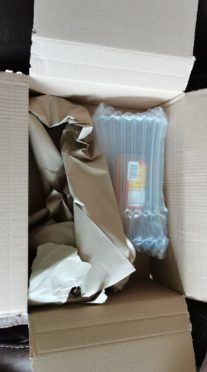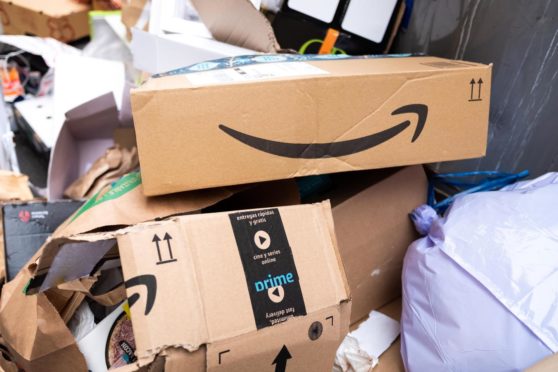An Inverness man is calling for new laws to restrict excessive packaging of online orders.
Edward Jones was shocked when a large cardboard box arrived at his door recently, packed with brown paper, tape and inflatable plastic packaging – all for a single small bottle of vinegar.
“My wife ordered a small bottle of apple cider vinegar and received this,” he said.
“I’m by no means an eco-warrior but I do know when not to overdo things, it’s a pity Amazon don’t.”
It’s far from the only over-packaged item Mr Jones has received during the last year, and he’s not alone.
The pandemic has prompted a frenzy of online spending, meaning that more parcels are arriving at our doorsteps than ever before.
Mintel’s January 2021 consumer behaviour tracker shows that 53% of adults are shopping more online now than at the start of the pandemic.
Data from Barclaycard found that Britons spent £40.6bn online on non-essential items during the first lockdown last year – about £770 per person.
Courier networks and Royal Mail have struggled to cope, citing exceptional demand for their services.
The volume of parcels being sent meant that some firms even reported a cardboard shortage.
But that doesn’t seem to stop companies from using excessively large boxes for even the smallest of items, filling them with unnecessary packing peanuts and other fillers.
“This overpacking of things is happening much too often and companies like Amazon should be more aware of climate change and the health of our delicate planet or face hefty fines,” said Mr Jones.
Regulations do exist in the UK to try to limit the amount of packaging waste produced by online shopping, but it is difficult to know how these rules are monitored.
The Packaging Responsibility Obligation is essentially a tax that is applied to companies to try and reduce the amount of packaging waste they generate.
The £776 fee applies to all UK registered companies with an annual turnover of more than £2 million.
This tax is used to fund recycling and recovery processes to reduce the amount of packaging waste that ends up in landfill, and is imposed on any business that produces packaging or sells packaged goods (including packaging to deliver goods).
However it’s not clear how this applies to daily deliveries received by customers, or how “excessive” packaging is defined.
An Amazon spokesperson said: “Amazon is committed to reducing packaging waste and using less packaging material.
“Initiatives like the Frustration-Free Packaging Programmes encourage manufacturers to package their products in an easy-to-open packaging that is 100% recyclable and ready to ship to customers without Amazon boxes.
“To date, Amazon has reduced the weight of outbound packaging by 36% and eliminated more than 1 million tonnes of packaging material, the equivalent of more than 2 billion shipping boxes.”
Have you received a delivery that had far more packaging than needed? Let us know at environmentandtransport@ajl.co.uk and your stories may be used for a future article we are planning on this issue.


